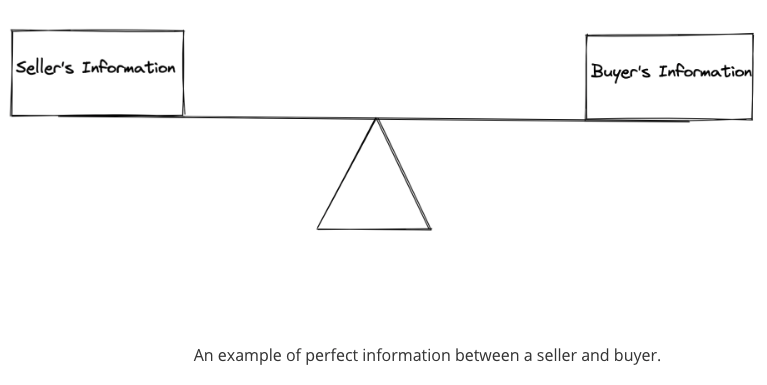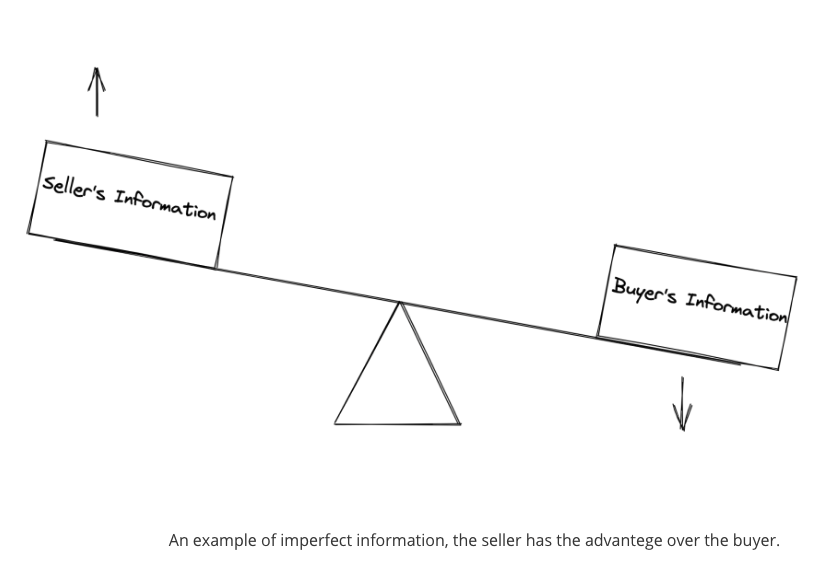The Information Asymmetry platforms
This post was originally published on Jul 6, 2021 by our CEO Saoud Khalifah on his blog.
⟶ Read his original blog postOne of my favorite pastimes is etymology, the study of the origin of words, that usually leads me to a Latin and historical rabbit-hole that I enjoy. Caveat emptor is a phrase you’ve probably heard or read before. Latin for “Let the buyer beware/be wary”, an Ancient Roman concept and maxim that is part of modern law and economic contract principles.
In a nutshell, the phrase puts forward that the responsibility is on the buyer for the due diligence on the product that they will be purchasing from a seller. The buyer has to ascertain and be satisfied the product fits the seller’s description. It is fascinating to see that humans and their interactions haven’t really changed much since the early days of civilization.
If we analyze the phrase further, it can be said that the seller has more information about the product or service than you, the buyer. As such, the buyer has to counteract this lack of information by conducting research, vetting and verification. This imbalance of information between the buyer and seller is part of a subject in economics, security and contract theory named
Information Asymmetry.
Information Asymmetry is a broad concept that can be applied beyond the domain of buyer and seller transactions, including markets, game theory, governance, diplomacy and much more. We will focus on the classic buyer and seller transaction in the digital realm showing how information asymmetry affects you today, perhaps even without you knowing it!
The Ubers, Grubhubs and Amazons of the world provide us with services and products that we are increasingly dependent on, in our modern, digitally intertwined lives.
If you think back 10 years to see how you were using the Internet compared with today, you will come to a realization that you are buying more online and relying on apps/services more than ever before:
How many of us pay for one or more subscriptions?How many of us shop on Amazon?How many of us had a telemedicine call?Each of these questions holds an element of information asymmetry that has been shaped by the platform that hosted the transaction.
In its simplest form, information asymmetry can be visualized as a balance. Below is a diagram when the state of perfect information is achieved, where the seller and buyer have equal amounts of information between them:

Unfortunately for consumers today, the information asymmetry in a digital transaction usually looks like this and it continues to trend downwards for the buyer:

If you look at the diagram above and end up asking yourself the questions “Why is that?” or “How is that even possible?”, you have already self-admitted to having less information than the seller in the transaction.
To understand this, let’s examine how we interact with Amazon, the largest eCommerce platform on the world.
By signing up on Amazon, and buying on the platform, we have already provided Amazon a wealth of data about ourselves. What categories of products we tend to buy, what brands we favor, how big our family is, what is our income bracket, what medical conditions do we have and so on. At this point, you are at a disadvantage, information wise, and the platform that hosts you knows more about you than you do, about them.
Say we are ready to buy something on Amazon, and as a consumer, you trust all the information you see on a product listing Amazon. After all, Amazon’s logo is a big yellow smile, how can you not trust the information on the website. Here again is another huge disadvantage. Armed with the knowledge that over 40% of reviews of Amazon are fake, the chances of getting a used or counterfeit product is increasing, and that you may buy a product from a 3rd party seller that may use your information for nefarious purposes (such as solicitation and marketing), the symmetry of information can be clearly drawn. You as a buyer are stuck in a flywheel of misinformation.
What is most interesting about the information asymmetry case on Amazon is how historically the balance of information between you (the buyer) and Amazon (the seller) has been dramatically changing. The lowering of the balance of information on the buyer’s side is evident, as Amazon got better in analyzing personal information and millions of third party sellers dominate the platform. It is not hard to see that information asymmetry is a critical component of the business model that these platforms operate with.
If you have used Amazon (or other equally sized behemoths) for the last 20 years, you can confidently see how skewed the information asymmetry balance is in favor of the platform versus the consumer. That’s how monopolies of knowledge are formed, but that is a topic for another blog post.
Information asymmetry is a concept that I have found myself always reminded of when we’re developing and building products at Fakespot. At our core, the products that Fakespot provides to users revolves around research, vetting and verification of information to increase the balance in favor of the consumer versus the platforms. We are proud to be building a company that actually brings back the balance to the consumer as this was one of the reasons that brought Fakespot into existence, my disappointment in getting scammed on Amazon many years ago.
When was the last time information asymmetry affected you?
Try Fakespot today and become a more informed consumer when shopping online, download our
Chrome extension,
Firefox extension or visit us at
Fakespot.com


